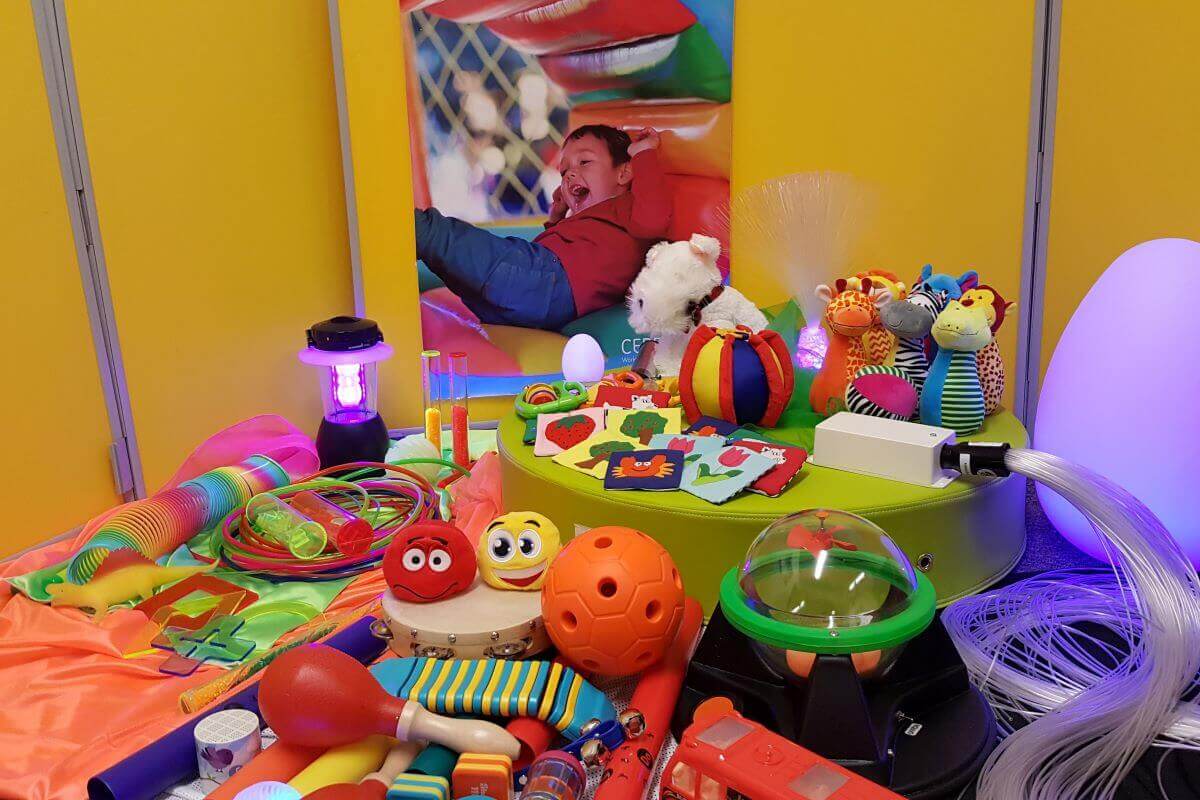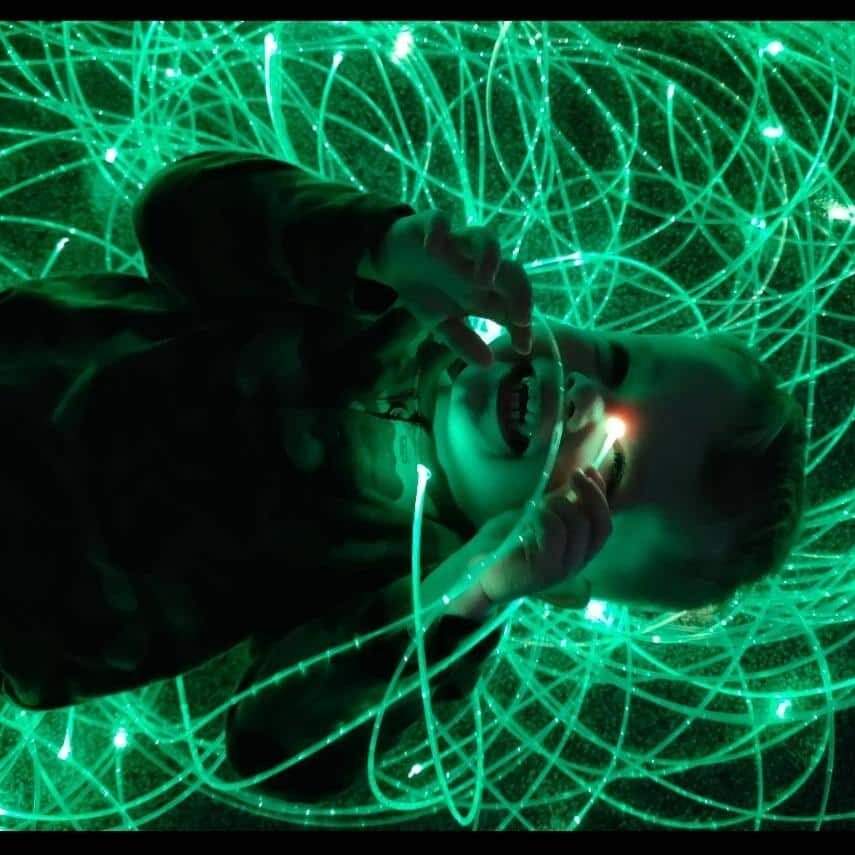In May 2025 we hosted a webinar on understanding neurodiversity in communication and social abilities in children with intellectual disabilities. The webinar was presented by Dr Katherine Ellis and Professor Jonathan Herring.
In this article Jane Margetson, Cerebra’s Lead Research and Education Officer, gives an overview of the main topics explored including:
- Using neurodiversity approaches to improve support
- Why might the neurodiversity approach be important in those with intellectual disability?
- Research summary
- A parent’s reflection on raising children with Fragile X syndrome
- Key messages
- Research references, resources and useful organisations
A recording of the webinar is available if you’d like to catch up in full:
Introduction
Dr Ellis opened the webinar by introducing the focus of her work on improving the wellbeing of children with intellectual disabilities, especially those with genetic syndromes. She suggests that a neurodiversity approach may be helpful in supporting communication and social abilities in children with intellectual disabilities, but emphasises that it is a new and evolving concept that is ever changing and debated.
Using neurodiversity approaches to improve support
Neurodiversity can be considered an alternative approach to the commonly used medical model, which suggests that to help someone, we must identify the ‘problem’, explain what causes it, and then use this information to ‘improve’ that communicative and/or social behaviour. Whilst the exact meaning and interpretation of the neurodiversity approach is currently debated, Dr Ellis introduced three key ideas that she suggested may be useful for supporting children with intellectual disability:
- Alternative social interaction, communication and thinking styles may be differences not deficits. This helps ensure we don’t exclude valid communication and social styles available to that child (e.g. using gestures instead of words)
- We should recognise and build upon a child’s strengths, alongside identifying and supporting their challenges.
- Adapting the social environment can be supportive or restrictive. It can help us identify and adapt social environments to provide support, without adding additional burden to a group with high levels of complex needs.
This table explains a way of thinking about how the neurodiversity approaches relate to the medical and social models of disability. However, Dr Ellis clarified that changing the environment alone cannot eliminate all challenges and suggested that neurodiversity approaches should never be used as a reason to withhold necessary interventions, training, or skill development. Rather, it should be seen as an additional tool in a broader support toolkit.
Why might the neurodiversity approach be important in those with intellectual disability?
Dr. Ellis’ webinar talk was based on her article, “Learning disability, beyond the cognitive: How neurodiversity can prompt a shift away from an ableist, stereotypical, nihilistic view”, published in The Psychologist. The article critiques how research into communication and social abilities in people with intellectual disabilities often lacks depth and relies on tools designed for neurotypical populations.
Dr Ellis argues that individuals with intellectual disabilities are frequently grouped together too broadly, sometimes only divided by the severity of their intellectual disability, which oversimplifies the diverse communication and social profiles we see in this community. This generalisation limits our understanding and hinders efforts to provide individualised, effective support.
Dr Ellis’ and the Cerebra Network’s research into genetic syndromes, associated with intellectual disability demonstrate the diversity of communication and thinking styles and highlights the benefits of not making assumptions of someone’s communication, social and thinking styles based on their level of intellectual disability.
Research summary
Dr Ellis drew on the studies conducted by her research group that focus on genetic syndromes associated with intellectual disability, such as Down syndrome, Fragile X, Cornelia de Lange, Rubinstein-Taybi, and Angelman syndrome, to illustrate the wide variability in sociability that does NOT correspond directly with their level of intellectual disability. For example, individuals with Angelman syndrome may have profound intellectual disability and no speech but show high levels of social motivation and enjoyment, whereas other groups with moderate levels of intellectual disability, such as those with Cornelia de Lange and fragile X syndromes, show social anxiety and withdrawal. The full list of research mentioned in the webinar is listed at the end of this article.
Dr Ellis also used these groups to highlight the importance of understanding a child with intellectual disability’s strengths and interests, and not just their challenges. For example, she showed research demonstrating how understanding children with Angelman syndromes specific preferences for social contact (e.g., eye contact and physical touch) can enhance their learning outcomes. In another example, she showed how individuals with Angelman or Cornelia de Lange syndrome may use gestures as an alternative means of communication, due to the verbal communication challenges common to both groups, despite their differing levels of intellectual disability.
She reflected on how we can begin to create more supportive social environments, for example by becoming better communication partners who are open to recognising and engaging with alternative ways of communicating.
Dr Ellis also discussed syndrome specific differences in anxiety responses, selective mutism, the use of gestures as compensatory strategies, social motivation, mentalising and the role of executive function in communication difficulties across syndromes to further demonstrate the above points. For a full description please see minutes 10.50 to 109.30 of the catch-up video.
Ultimately, Dr Ellis advocates for a neurodiversity-informed approach that recognises intellectual disability as only one part of a person’s profile. She emphasises the importance of understanding each individual’s unique communication, social, and thinking styles to embrace difference, build on strengths, and create truly supportive environments.
A parent’s reflection on raising children with Fragile X syndrome
Jonathan, a parent of two young women with Fragile X Syndrome, shared his personal journey. Both his daughters Laurel and Joanna are now in their early twenties. Their family’s story highlighted the emotional and developmental challenges they faced, but more importantly, his stories illuminated the unique strengths and personalities of the girls.
Initially, the family assumed their children would follow traditional academic paths, as they themselves had. However, early signs indicated differences, especially with Laurel. After inconclusive medical assessments, a doctor eventually called with a sudden realisation, it was likely to be Fragile X Syndrome. This diagnosis, though initially framed in negative terms, was only part of the picture.
Both girls faced early challenges in school, particularly Laurel, with tasks like drawing and writing, with her artwork standing out starkly from classmates. However, this later became a cherished reminder of her expressive individuality. Misunderstandings were common, for example, when given a multiple-choice test, Laurel ticked every possible box, including letters shaped like boxes, showing effort, not failure.
Despite early challenges, both girls are now doing well. Joanna is highly social and empathetic and is now thriving in a vocational course that led her to a fulfilling role in a care home, where her kindness and helpful nature shine. Laurel, more reserved and detail-oriented, showed determination by retaking math until she could pursue her dream of going to university, where she now excels in textile design and has formed meaningful connections there.
Jonathan highlighted that the competitive, performance-driven model of parenting would not work for his children to get the best from them. Instead, they as a family emphasised allowing their children to become who they truly are. Jonathan’s presentation was a moving call to support and recognise the full humanity of people with Fragile X syndrome and other genetic syndromes or intellectual disability, not just identifying their difficulties and supporting those, but also placing focus on championing their unique contributions and perspectives.
Key messages that came from reflections at the end of the webinar
- People really like the neurodiversity approaches, but there was a feeling that it’s a shame that it’s at odds with all the fighting and deficit-based language required to meet thresholds to have any chance of getting support for children
- Participants reflected that the use of the medical model alone and reliance on diagnosis is causing real barriers to children receiving the support that they need
- Dr Ellis’ final comments suggested that it may be useful to have a more holistic approach where we are encouraging more in-depth individual assessments
Resources
Further Inform Neurogenetic Disorders website: The FIND website is for parents and professionals and contains evidence-based information about a selection of genetic syndromes. This includes information about sleep, behaviour, mental health and communication.
The Find Teacher Resources website : The Find Teacher Resources website. This is a fantastic resource to share with educators to help increase understanding about genetic conditions and neurodiversity in school.
Talking Mats: An innovative, award-winning communication tool based on extensive research and was designed by Speech and Language Therapists.
Research
Ellis, K et al (2025) The importance of refined assessment of communication and social functioning in people with intellectual disabilities: Insights from neurogenetic syndrome research
Crawford et al (2020) A Behavioural Assessment of Social Anxiety and Social Motivation in Fragile X, Cornelia de Lange and Rubinstein-Taybi Syndromes
Ellis et al (Preprint, 2025) Children with Cornelia de Lange and Fragile X Syndromes Spontaneously Represent Others’ False Beliefs.
Heald et al (2021) Refining the Behavioral Phenotype of Angelman Syndrome: Examining Differences in Motivation for Social Contact Between Genetic Subgroups
Pearson et al (2019) Communication in Angelman syndrome: a scoping review
Useful organisations for information and support
Cerebra: Legal Entitlements and Problem Solving Project, Sleep Advice Service, Innovation Centre, Toy and Book Library, Parent Guides and Research.
Unique: Provides support, information and networking for rare chromosome and gene disorders.
Genetic Alliance: Information and support for those with genetic, rare and undiagnosed conditions.
Rare Disease International: The global alliance of people living with a rare disease of all nationalities across all rare diseases.
ACE Centre: Specialising in supporting the use of augmentative and alternative communication (AAC) and assistive technology (AT).












